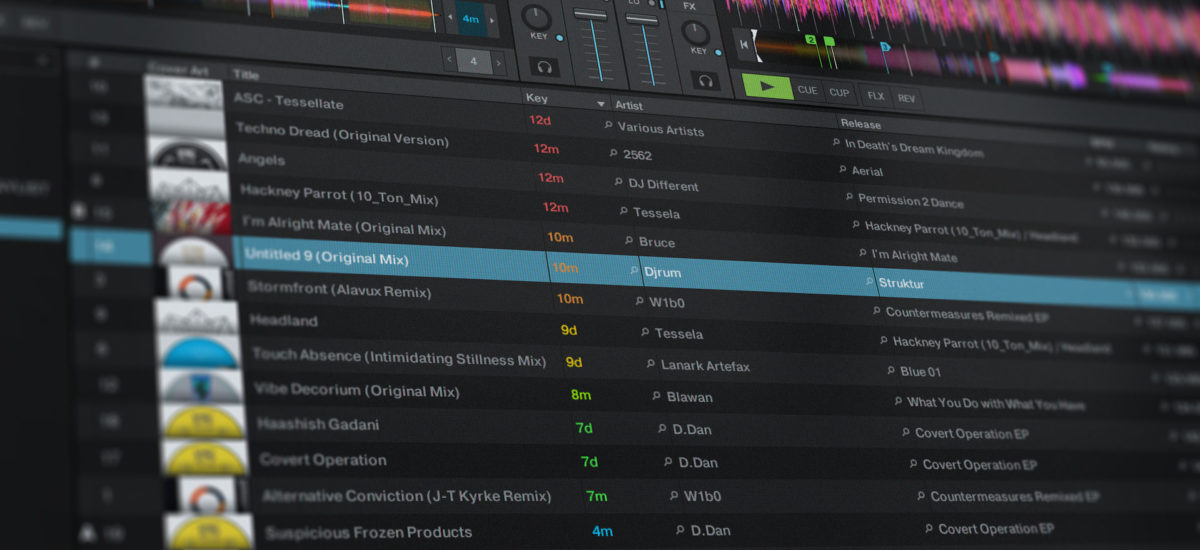
You might have heard of harmonic mixing, but whether you’ve given it much thought is another question. Like most of us, you probably play a set by picking records that sound good and fit the vibe, increase the energy, or bring the crowd down for some well-deserved respite after hours of peaktime mayhem (or uptempo Chicago house, whichever way you roll).
But what’s actually going on there? Why can the same track, depending on where it’s mixed, be both a club-clearing wet wipe, or a dancefloor weapon?
The TRAKTOR team just dropped the Harmonic Mixing Update, TRAKTOR PRO 3.2. Its main focus is on harmonic mixing – to crack open the spellbook of the dark art, and make mixing in-key less of a topic with which to bore people at parties, and more something you can do and have fun with without giving it too much thought.
That said, you’ll need to learn a little about it at first, so what better time to take a whirlwind look at what it means to mix in key, and how you can start to sprinkle some of its magic into your sets? It may look complicated at first sight, but it’s actually pretty simple.

Open key notation
Let’s take a look at this thing you might have come across before: The Open Key circle. TRAKTOR uses open key notation, and this colorful circle is its bible. The numbers and letters represent different possible keys.
The outer ring represents major keys (which sound more upbeat, or happier) and the inner circle represents minor keys (usually darker sounding).
They are ordered in such a way that adjacent keys complement each other – so any given track should harmonically mix with tracks of up to three different keys.
Of course, the most simple way to mix harmonically to mix two tracks of the same key, such as two 6d tracks, and they would work together harmonically, but things get more interesting when you move around the circle in certain ways.
Major to minor and back again
Each major key has a corresponding minor key with the same number, and vice-versa, (musicians called this the relative major or minor, but it’s not too important). This means you could mix a moodier (i.e., minor) track (7m for example) into a brighter (i.e., major), more upbeat one with the same number (7d) and they would work together.
Let’s hear how that sounds:
Going around the circle
It’s also possible to move around the circle using the numbers – so from 4d to 5d or 3d, or from 4m to 5m or 3m. These are different keys, but – as mentioned – should work well together harmonically.
This mix goes from a 3d track to a 2d track.
The energy boost
The circle can be a useful tool for finding tracks that work well together, but it’s also important to trust your ears. Rather than going around the circle in steps, it’s possible to jump around for certain effects.
The following two mixes use the same tracks, which are both at 10m by default. In the first mix, they are both the same key. In the second mix, the incoming track is pitched up to 12m, so skips a segment of the circle. The result is an energy-boosting, more euphoric mix that can be used to create build up to a peak in your set.
This is an example of trusting your ears, and using the circle as a guide rather than a rulebook. Likewise, harmonic mixing is something you can use when it makes sense, and can ignore when it doesn’t. If you’re mixing a track with lots of vocals into another track with plenty of synths, then making sure they’re harmonically matched is a good idea. On the other hand, it’s probably not worth stressing it if you’re mixing heavily percussive DJ tools into one another. And lastly, if there’s a track you know will set the house on fire next, you should probably drop it anyway.
Chris Liebing on harmonic mixing
Chris Liebing is a DJ who knows his way around harmonic mixing and came by the TRAKTOR office to present his take on the technique. If you’re looking for some extra tips from the seasoned pro, check out the video below.















